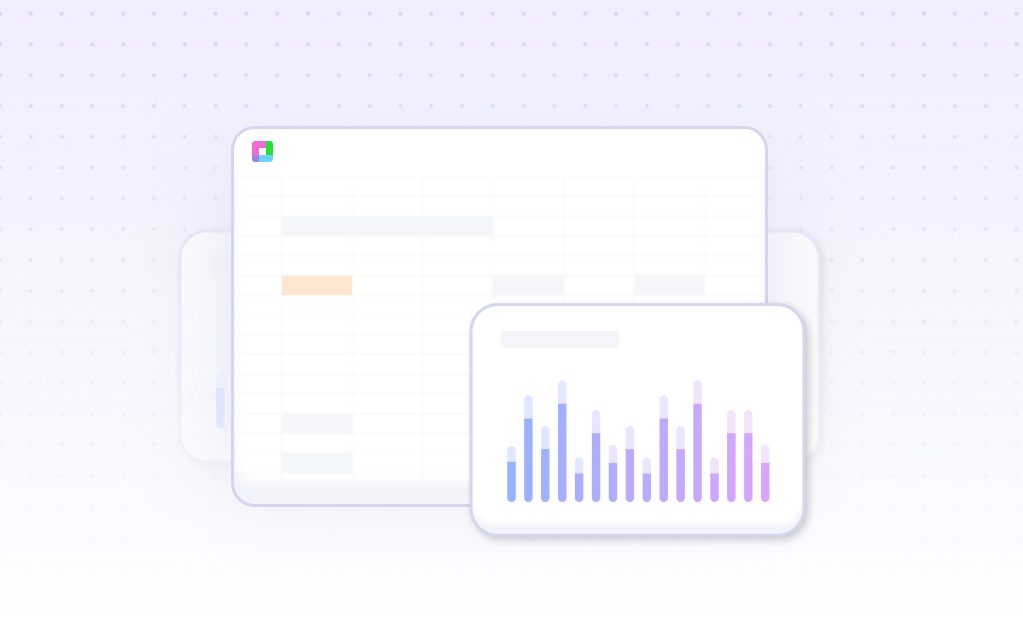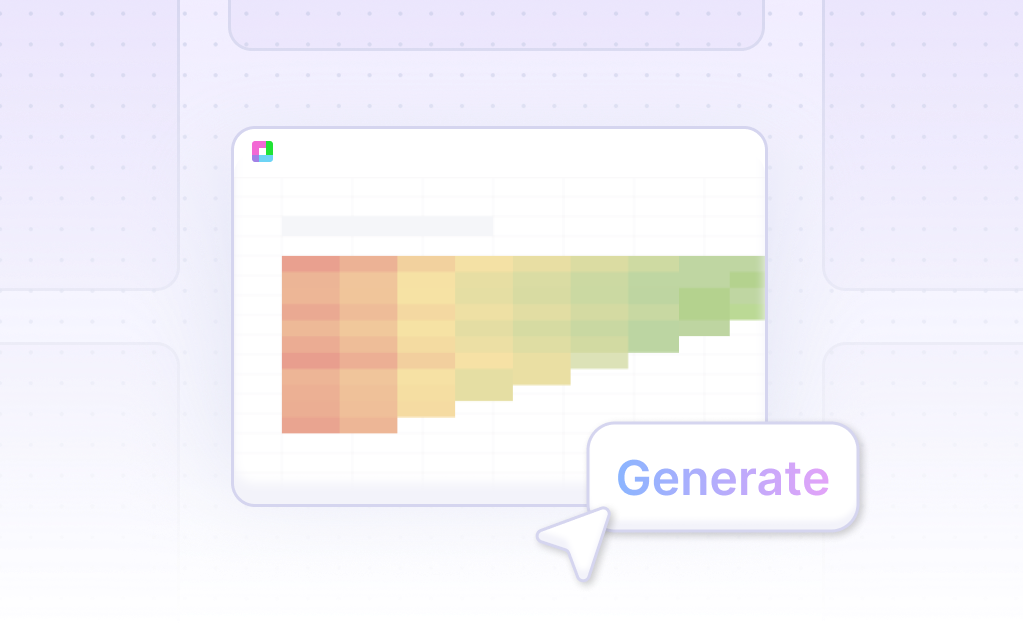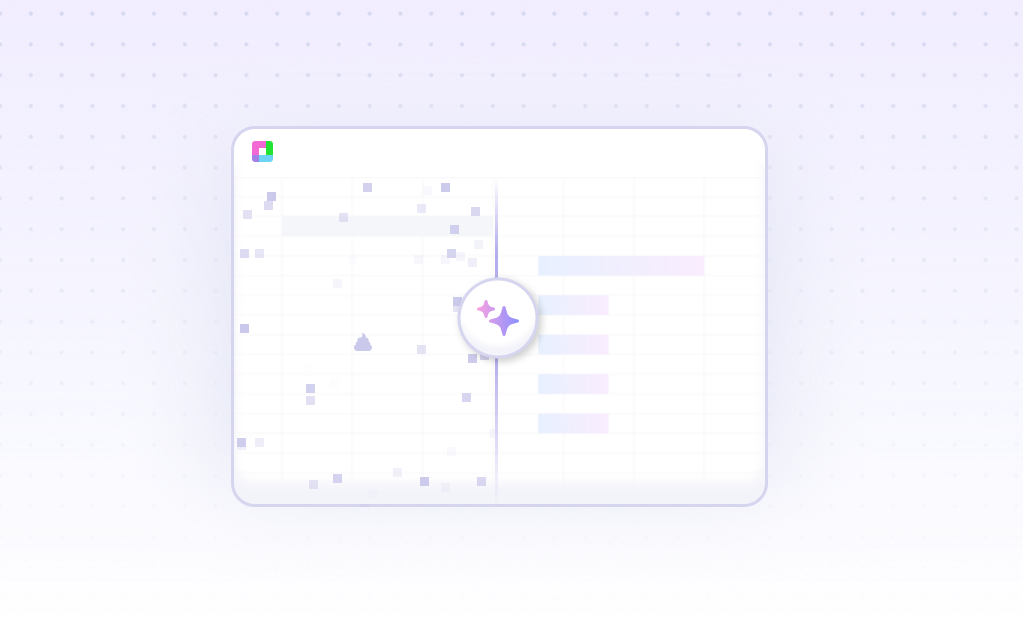
Introduction
Creating a Stacked Line with Markers Chart efficiently processes comparative changes over time across multiple categories. Traditionally, spreadsheet tools like Excel and Google Sheets have been employed for this purpose. However, these require a manual setup of data, configurations, and formatting.
Sourcetable introduces an innovative approach by integrating AI capabilities within their spreadsheet platform. This AI assistant simplifies generating complex charts, including Stacked Line with Markers Charts. Users are empowered to quickly visualize data without in-depth spreadsheet knowledge.
To explore the enhanced capabilities of creating charts with minimal effort, sign up for Sourcetable to generate your first Stacked Line with Markers Chart or continue reading for more detailed information.
What is a Stacked Line with Markers Chart?
A Stacked Line with Markers Chart, also known as a compound line chart, is a type of data visualization that shows the cumulative effect of multiple data sets stacked on top of each other. This chart is used to visualize the combined impact of several factors on a single outcome over time or evenly spaced categories.
How It Works
A compound line chart illustrates how each individual data set contributes to the overall total. The trend shown is the sum of all values below a particular line, which helps in understanding the part-to-whole relationships and radical changes in contributions over a period.
Applications
Stacked Line with Markers Charts are particularly useful when you want to display how each value contributes to the whole over time, especially when dealing with multiple categories. They are ideal for showing the trend of contributions in data where the values are approximate and there are many categories to consider.
Benefits
This type of chart helps in visualizing changes in a measure over time through multiple category values. It provides a rough idea of the numbers, highlighting part-to-whole contributions and showcasing how various data sets interact cumulatively.
Considerations
While helpful in many scenarios, be aware that a stacked line chart may distort trends as it shows the cumulative effect. If precise trend analysis is required, a regular line chart may be a better option to avoid potential distortions.
When to Use a Stacked Line with Markers Chart
Overview
A Stacked Line with Markers Chart is ideal for showcasing trends over time and highlighting how individual series contribute to the total. Each marker adds precision by pinpointing exact values at specific intervals, thus facilitating detailed analysis.
Pros
This chart type effectively illustrates cumulative totals, making it easy to see overall growth or decline. Markers enhance readability by clearly identifying data points, thereby improving the granularity of insights.
Cons
One drawback is potential clutter when dealing with many series or data points. Overlapping lines can obscure individual data, making it hard to interpret specific trends. Additionally, this type may not effectively display large discrepancies between series.
Comparison with Other Charts
Compared to a simple Line Chart, the stacked variant provides a better visual of total values but may obscure individual trends. Unlike a Bar Chart, it gives a continuous view of data over time, yet lacks the immediate clarity for comparing individual values.
How to Generate a Stacked Line with Markers Chart with Sourcetable
- Creating a Stacked Line with Markers Chart in Sourcetable, an AI-powered spreadsheet, is straightforward and efficient. Follow these steps to produce your chart seamlessly.
- First, generate sample data using Sourcetable's AI assistant or upload a CSV file. This step ensures you have a dataset ready for visualization. Next, select the range of data you want to convert into a Stacked Line with Markers Chart.
- Then, ask the AI assistant to generate the Stacked Line with Markers Chart. The AI assistant handles the complexities, providing you with a preliminary chart quickly. Use the AI assistant to refine your chart, adjusting formatting, labels, and other specifics to meet your needs.
- Using Sourcetable AI is the easiest method for creating a Stacked Line with Markers Chart, saving you time and effort compared to manual creation in Excel or Google Sheets.
How to Generate a Stacked Line with Markers Chart in Excel or Google Sheets
Creating a Stacked Line with Markers Chart in Excel
To create a stacked line with markers chart in Excel, use a regular line chart instead of a stacked line chart format. This chart type helps to separate lines when the values are similar, clearly showing individual trends.
To increase the separation between lines, adjust the vertical axis settings. Set the minimum value to 5% and the maximum value to 25%. These steps make the chart visually distinct and easier to interpret.
Creating a Stacked Line with Markers Chart in Google Sheets
In Google Sheets, start by creating a stacked bar chart. Then, add a line graph on top of the stacked bar chart. This combination visualizes how different series of data contribute to a total while highlighting individual data points with markers.
Google Sheets also supports combo charts, which can display each data series with different marker types such as columns, lines, and area lines. Using a combo chart for a stacked line chart helps to show how various data series add up to a total with clear marker distinctions.
Use Cases Unlocked by Visualizing Data Using a Stacked Line with Markers Chart
Tracking Sales Performance |
A Stacked Line with Markers Chart effectively visualizes sales performance over time. By displaying multiple product lines or regions, businesses can identify trends, compare performance, and make informed decisions to boost revenue. |
Monitoring Website Traffic |
This chart type helps in tracking website traffic from various sources. By stacking traffic data and marking key events, it becomes easier to analyze user engagement, identify peak periods, and optimize marketing efforts. |
Budget vs. Actual Expenditure Analysis |
A Stacked Line with Markers Chart is ideal for comparing budgeted and actual expenditures across different departments. Visual markers can highlight significant variances, facilitating better financial management and accountability. |
Employee Productivity Tracking |
Organizations can use this chart to monitor employee productivity over time. By stacking productivity data from different teams or projects, it provides a clear view of overall performance and helps identify areas needing improvement. |
Customer Support Response Times |
This chart type helps in visualizing customer support response times across various channels. Stacked lines can represent different support teams or channels, making it easier to identify performance bottlenecks and improve customer satisfaction. |
Project Milestone Progress |
Project managers can use a Stacked Line with Markers Chart to track progress against milestones. Visual markers can indicate completion rates and impending deadlines, enabling proactive project management and timely delivery. |
Social Media Engagement |
Visualizing social media engagement metrics with this chart helps businesses track performance across platforms. Stacked lines and markers make it easier to spot trends, peak engagement times, and measure the impact of promotional activities. |
Frequently Asked Questions
What are stacked line charts used for?
Stacked line charts may be used to separate lines when the values of each series are similar.
Why are stacked line charts not recommended?
Stacked line charts are not recommended because they distort trends by showing the trend of the sum of all the values below a line instead of the value of that line.
What is a better alternative to stacked line charts for showing trends?
It is better to use a regular line chart instead of a stacked line chart to avoid distorting trends.
How do stacked line charts show trends?
The lines in a stacked line chart show the trend of the sum of all the values below the line, not the value of that line.
When are stacked line charts useful?
Stacked line charts are good for showing trends when the values of the series are similar.
Conclusion
Throughout this guide, we've explored the essentials of creating a Stacked Line with Markers Chart. We discussed its definition, the process of creating it in traditional spreadsheet programs like Excel and Google Sheets, and the innovative way to generate it using AI in Sourcetable.
Sourcetable elevates the experience by offering an AI-powered spreadsheet assistant, making it effortless to create complex charts, including the Stacked Line with Markers Chart. This tool is ideal for users aspiring to leverage AI for enhancing their data visualization capabilities.
To start harnessing the power of AI for your data visualization needs, sign up for Sourcetable today and create your first Stacked Line with Markers Chart effortlessly.
Frequently Asked Questions
If you question is not covered here, you can contact our team.
Contact Us





